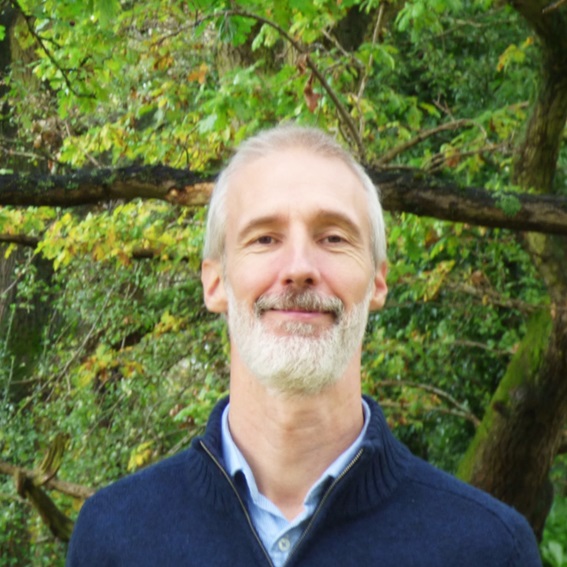Meet the people delivering our energy strategy
Below we will include interviews with some of the people delivering our energy strategy.
Gez Hunter - Associate Director of Energy and Infrastructure

Please tell us about your role at the University and how you are contributing to the University's energy strategy
"My role as Associate Director of Energy and Infrastructure involves two key elements, both of which are completely interlinked.
One of these is to develop the energy strategy into a deliverable plan of action. The objective is to support the university’s commitment to reducing carbon emissions and switching from fossil fuel to renewable forms of energy. The strategy is “Reduce, Decarbonise and Smart”. So that we Reduce (emissions and consumption), Decarbonise (our energy source) and develop Smart (buildings and energy networks). This involves working with multiple teams and stakeholders across the university, and also external stakeholders and potential partners. To support this I manage a highly experienced engineering team with responsibility for developing low energy, low carbon, and low maintenance design solutions.
The second, and equally important element is the University Capital Plan, which actually provides the opportunities to transition towards a net zero carbon campus. All Capital, Energy and Infrastructure projects undertaken by the Estates Office are developed in accordance with our own set of design standards. The Building Energy Efficiency Design Standards, or "Warwick Standard", set out the best practice in building energy performance and are mandated for all projects delivered. The engineering team are focused on delivering around 150 projects per year and ensuring that all of these projects contribute to the university’s Net Zero Carbon strategy.
I generally spend my time working across these two complimentary objectives."
Tell us about an exciting project that you are working on at the moment and why is this important?
"There are a number of strategically important projects currently in design which have been developed in accordance with the university design standards. These include the STEM Connect and the Social Sciences Connect projects both of which are hugely important to the University. These transformational projects will be designed to meet our Net Zero Carbon targets and will be supported by new Energy Centres which will provide heating and cooling using renewable energy. The heating and cooling for these buildings will be provided via “ground source heat pump” technology and we will extend the existing university district energy network to include these building as well as other planned developments such as the Oculus 2 and EIC 2 buildings. Additional interventions to the energy network will include increased energy storage and additional on-campus renewable electricity generation.
In short, we are aligning the university’s Masterplan, Capital Plan and Net Zero Carbon strategies to deliver low carbon buildings and transform the university’s energy network."
Andrew Thomas - Senior Energy and Carbon Manager

Please tell us about your role at the University
"I’m Andrew Thomas, Senior Energy and Carbon Manager, part of the Energy and Sustainability Team in the Estates Department. I’m responsible for reporting University carbon emissions across all Scopes, from the energy we use to the way we travel and what we buy and helping to identify ways of reducing our impact."
What are the Universities scope 1 and 2 targets and what does that mean in terms of your day to day job?
"Scope 1 emissions refer to the greenhouse gases that we emit directly from our facilities, most of our emissions are in the form of carbon dioxide from burning fuels, especially natural gas, but they also include other gases such as the hydrofluorocarbons that escape from refrigeration systems.
Scope 2 emissions refer to the greenhouse gases created by others during the generation of energy– the most common being emissions from power stations in the generation of electricity. The only energy we purchase is grid electricity and this all comes from renewable sources but generating more of our own would reduce our reliance on others and be more economical over the longer term.
The University has committed to achieving net zero emissions from Scopes 1 and 2 by 2030. Since almost all our Scope 1 and 2 emissions come from the energy we use, my day-to-day job involves a lot of analysis of energy usage – looking at where are we using energy and how can we reduce it, and about where that energy is coming from and what low carbon alternatives can work for us."
Tell us about an exciting project that you are working on at the moment and why is this important
"If we were to put our energy use into two simple categories, electricity, and heat, more than half of the energy we use at the University is as heat (for heating the buildings we work in or the hot water in the taps and showers). Today, almost all that heat comes from the burning of gas, making the decarbonization of heat one of our biggest priorities and biggest challenges, that is why I’m excited about the boreholes we’re currently drilling on campus. The boreholes will tell us about the viability of ground source heat pumps on campus; when run on renewable electricity ground source heat pumps can provide a very low carbon source of heat and be a viable alternative to gas heating.
We’re determined that any new buildings on campus will not be heated by fossil fuels. The drilling we’re doing is an expensive and long process, but it will help us determine the best way to access the renewable energy source beneath our feet that could be used to heat these new buildings.
We already have a very large network of underground pipes on campus that supply heat to lots of buildings from central sources. The drilling will help us determine how a new renewable heat source could connect into this network and begin the process of decarbonizing the heat to the connected buildings. We’re hoping to get results by May 2024 on the potential for ground source heating on campus."
